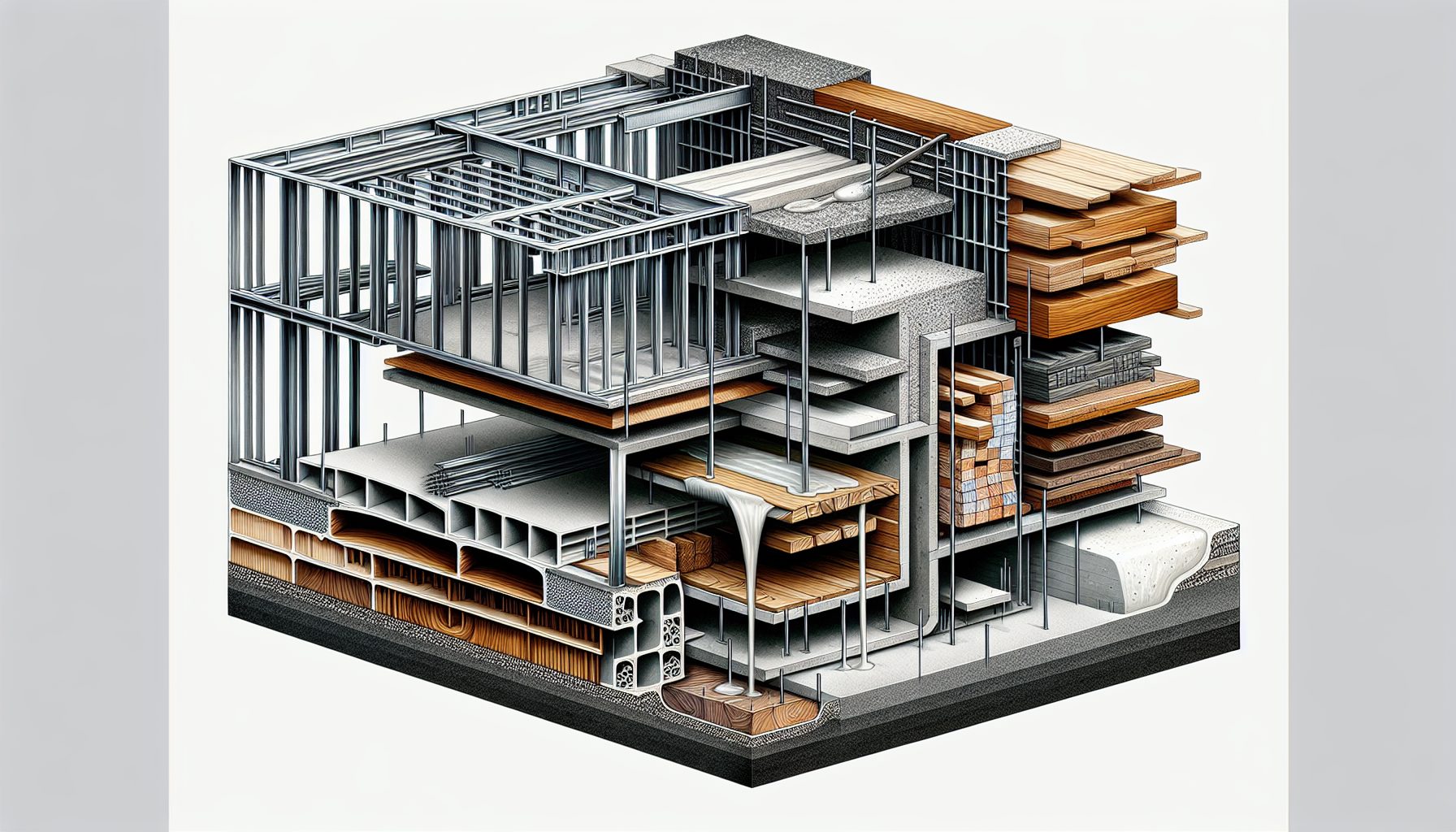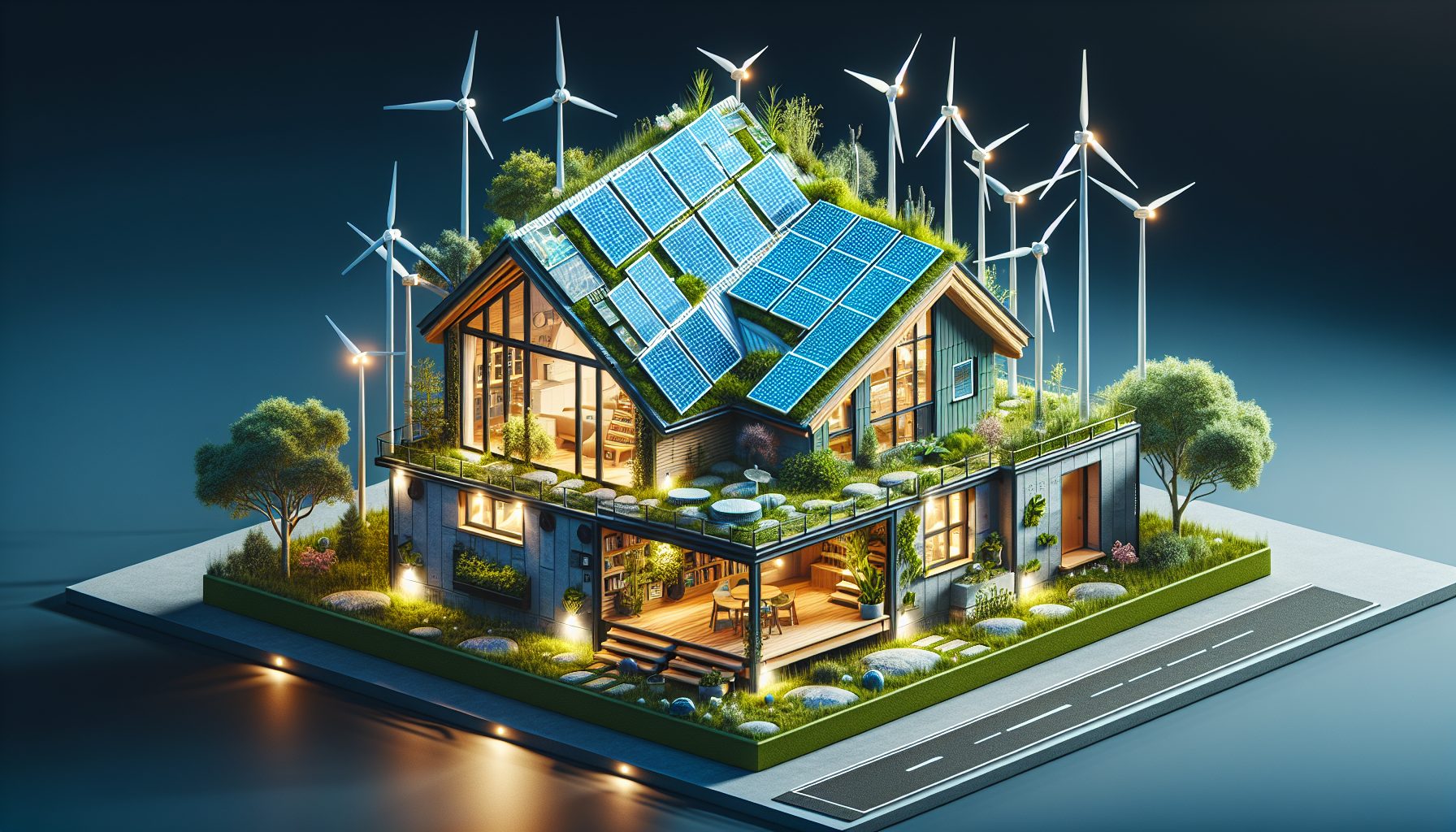Unconventional Charm: A Practical Guide to Non Standard Construction Homes

Unconventional Charm: A Practical Guide to Non Standard Construction Homes
The post Unconventional Charm: A Practical Guide to Non Standard Construction Homes appeared first on UK Construction Blog.
What is non standard construction and why does it matter for homeowners and buyers? From metal to timber or concrete frames, such properties diverge from the norm, potentially affecting mortgages, insurance, and maintenance. This guide unpacks the essentials, helping you navigate the peculiarities of these unique homes.
Key Takeaways
- Non-standard construction properties diverge from traditional materials and techniques, utilizing alternative methods such as timber-framed, metal-framed, and various concrete constructions.
- While non-standard construction homes are often more affordable and can be quickly built, they pose challenges with mortgage eligibility and insurance due to perceived higher risks.
- Special attention is required for the maintenance, sale, and insurance of non-standard homes due to their unique construction materials and the potential for structural issues.
Defining Non-Standard Construction

Non-standard construction properties diverge from traditional houses made of brick or stone with slate or tiled roof. Instead, they branch out into exciting territories of the non traditional construction process, such as traditional construction alternatives:
- metal-framed
- timber-framed
- precast concrete
- in-situ concrete construction
Imagine a B1 Aluminium Bungalow or a BISF house; these are popular examples of metal-framed non-standard construction houses.
In contrast, Frameform exemplifies the timber-framed category, with Wimpey No-Fines houses standing as an epitome of in-situ concrete non-standard construction.
Advantages of Non-Standard Construction Homes

The appeal of non-standard construction homes primarily lies in their affordability compared to standard ones, providing cost-effective alternatives for buyers. This affordability not only benefits individual homeowners but also local authorities and developers who turn to non-standard construction methods for mass building projects to meet housing demand promptly.
Timber frame houses, for instance, leverage engineered design for economical benefits, optimizing timber use and strength in steel or timber systems.
Common Non-Standard Construction Methods
Discussing non-standard construction methods brings to mind a few popular types. Concrete system built houses, like the prefabricated concrete houses found in the post-war examples in the UK, represent a significant portion of non-standard construction homes.
Next, there are steel-framed houses, like the British Iron and Steel Federation (BISF) houses, standing as a renowned category of metal-framed non-standard construction in the UK, often featuring steel frames.
Identifying Non-Standard Construction Properties
Discerning a non-standard construction property calls for meticulous attention to detail. These homes often feature walls not made from brick or stone walls and may include materials like:
- cladding
- flint
- straw bale
- wattle and daub
- glass
- corrugated iron
- wood
- Stramit
- steel
- metal
External features like concrete blocks resembling cladding or exposed post and panel construction are common among various non-standard construction types.
Mortgage Challenges for Non-Standard Homes
Despite the numerous benefits of non-standard construction homes, they present distinctive challenges, especially in securing a non standard construction mortgage. Due to issues like higher susceptibility to structural defects and the presence of non-traditional materials, these homes are often perceived as riskier by mortgage lenders. This perception can lead to a limited selection of mortgage lenders, with some systems like Wimpey no fines concrete being accepted by lenders, indicating variables in lender perceptions and requirements.
Insurance Considerations for Non-Standard Construction
Similar to the mortgage process, insuring non-standard construction homes entails unique considerations. These properties typically require specialist insurance due to their unique risks and specifics. It can be difficult to find home insurance for unconventional houses, and premiums may be higher due to mainstream insurers’ lack of specialist risk assessment knowledge for these properties.
Inspecting and Maintaining Non-Standard Homes
Ownership of a non-standard construction home extends beyond appreciating its distinct aesthetics to encompass diligent maintenance and upkeep. Non-standard construction homes built in the 1970s, for example, have presented problems with thermal and noise insulation, condensation, and failure of external cladding and structural components.
By the 1980s, some non-traditional housing systems experienced issues with structural stability and durability, such as carbonation and the presence of chlorides in concrete.
Selling and Buying Non-Standard Construction Homes
Entering the market of non-standard construction homes, as either a seller or a buyer, necessitates a comprehensive understanding of the inherent challenges and opportunities. Selling non-standard construction homes can be challenging, with lender reservations about the property’s resale potential and value potentially increasing the time it takes to sell. Considerations when planning to sell a non-standard construction property include:
- The view of lenders
- Mortgage obtainability
- Additional associated costs
- Local market nuances
Case Studies: Successful Non-Standard Construction Projects
Although non-standard construction homes may present daunting challenges, numerous successful projects exemplify the potential for inventive, cost-efficient, and sustainable housing solutions. Non-standard construction homes in the UK experienced a surge in popularity after the First and Second World Wars, driven by an acute housing shortage and the necessity to construct homes rapidly with limited skilled labor and materials available. The Building Research Establishment has documented over 500 different non-standard construction systems that were developed between 1919 and 1976. Some examples of non-standard construction systems include:
- Timber frame construction
- Concrete panel construction
- Steel frame construction
- Pre-fabricated construction
In the case of a non standard construction house, timber frame construction is one of the most popular methods due to its cost-effectiveness and sustainability.
These systems offered innovative solutions to the housing crisis and continue to be used today in various forms.
Summary
In the world of real estate, non-standard construction homes offer a unique blend of innovation, affordability, and aesthetic appeal. While they come with their own set of challenges, their potential to provide cost-effective, sustainable, and stylish housing solutions is unarguable. With the right knowledge and careful consideration, owning a non-standard construction home can be a rewarding experience.
Frequently Asked Questions
What is non-standard construction?
Non-standard construction refers to homes built with materials other than brick or stone, such as metal-framed, timber-framed, precast concrete, and in-situ concrete. These alternative materials distinguish it from standard construction methods.
What are the advantages of non-standard construction homes?
Non-standard construction homes offer advantages such as affordability, sustainability, energy efficiency, faster completion times, and unique design features, making them a compelling option for many home buyers.
How do I identify non-standard construction properties?
You can identify non-standard construction properties by looking for external features, materials, and roofing types that deviate from traditional brick or stone construction.
What are the mortgage challenges for non-standard homes?
Non-standard homes can pose challenges for securing a mortgage, such as limited lender options, higher deposits, and elevated interest rates due to perceived risks and maintenance costs.
What insurance considerations are there for non-standard construction?
When insuring non-standard construction homes, it’s important to find specialist insurers and expect potentially higher premiums to account for unique risks and repair costs.
Comments are closed